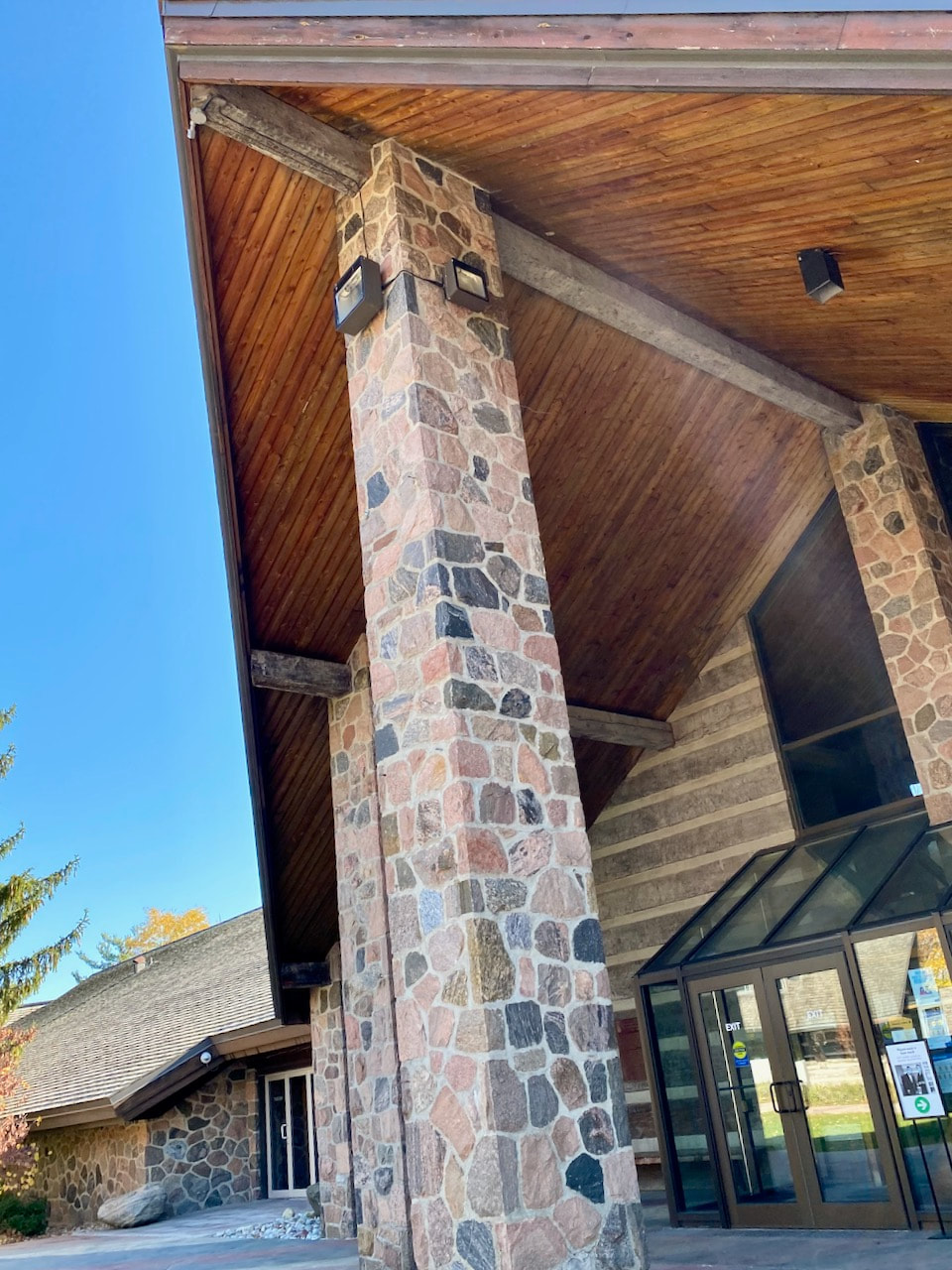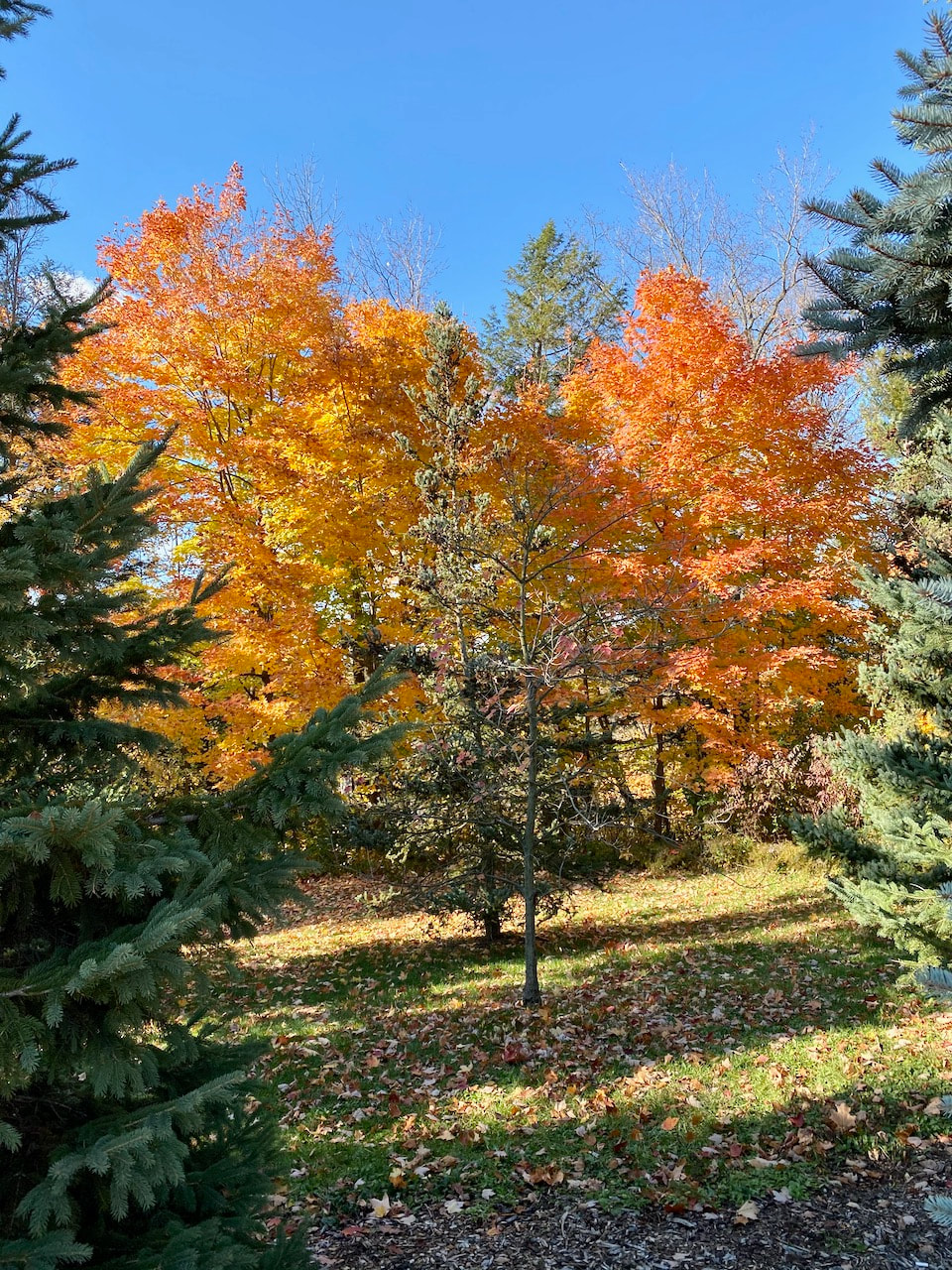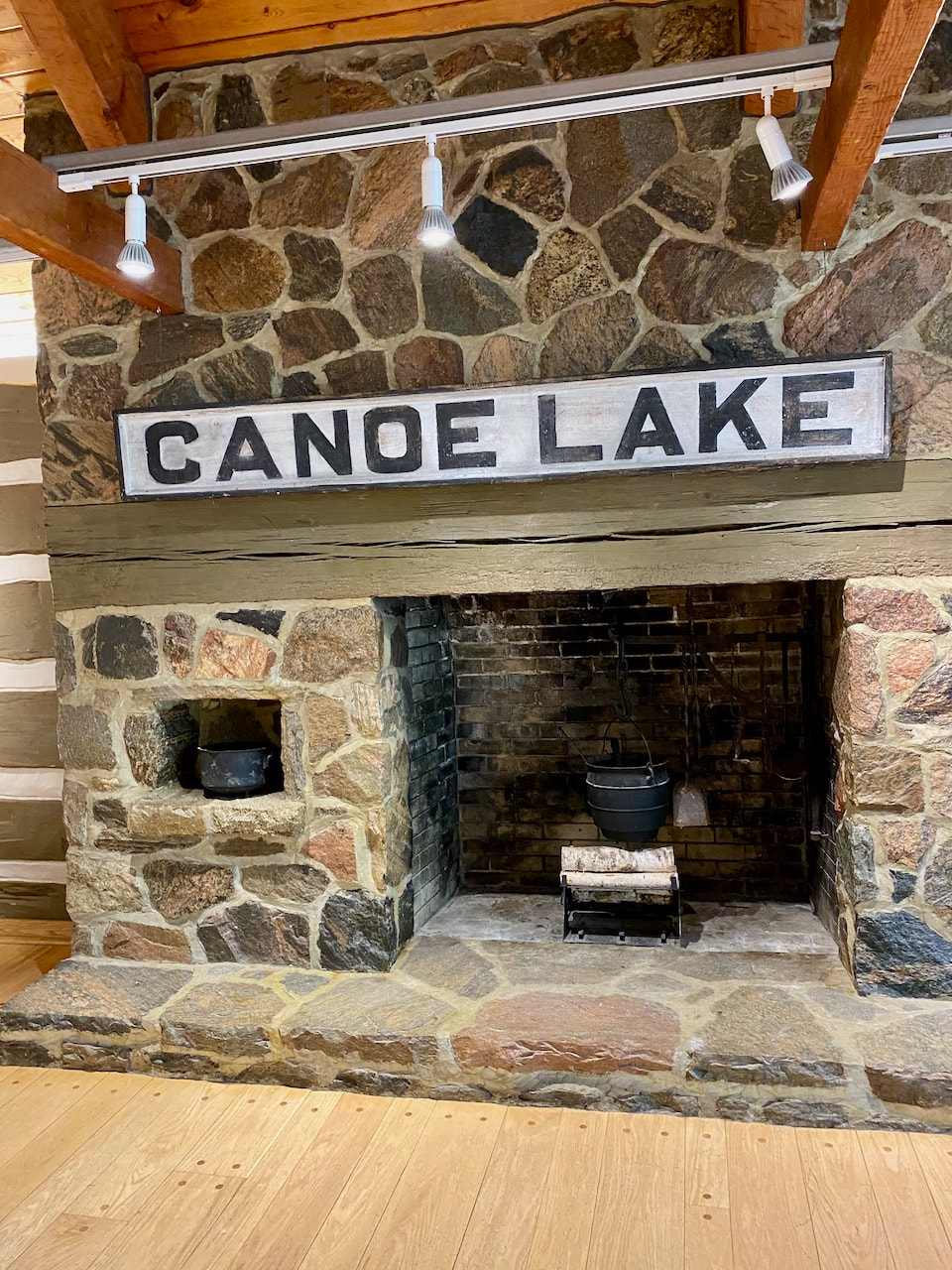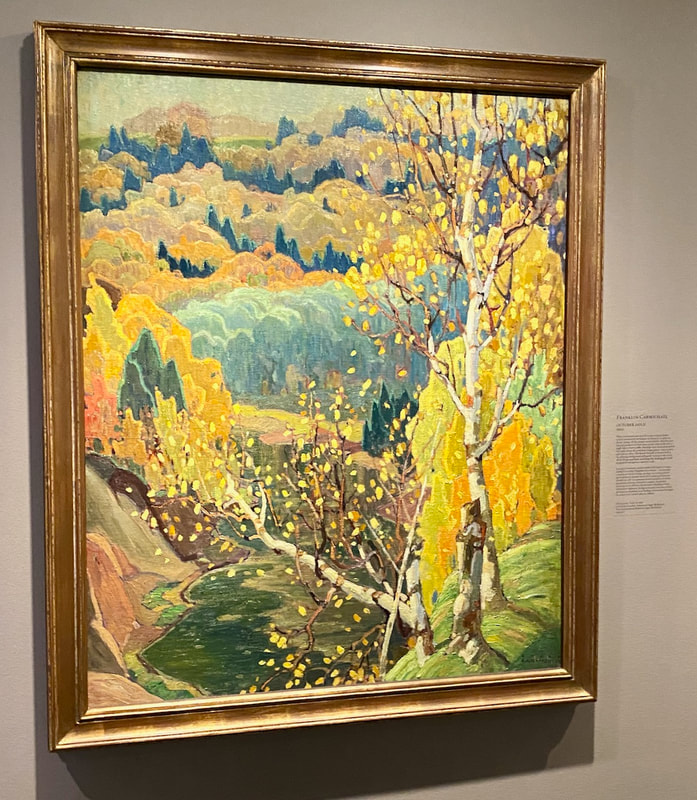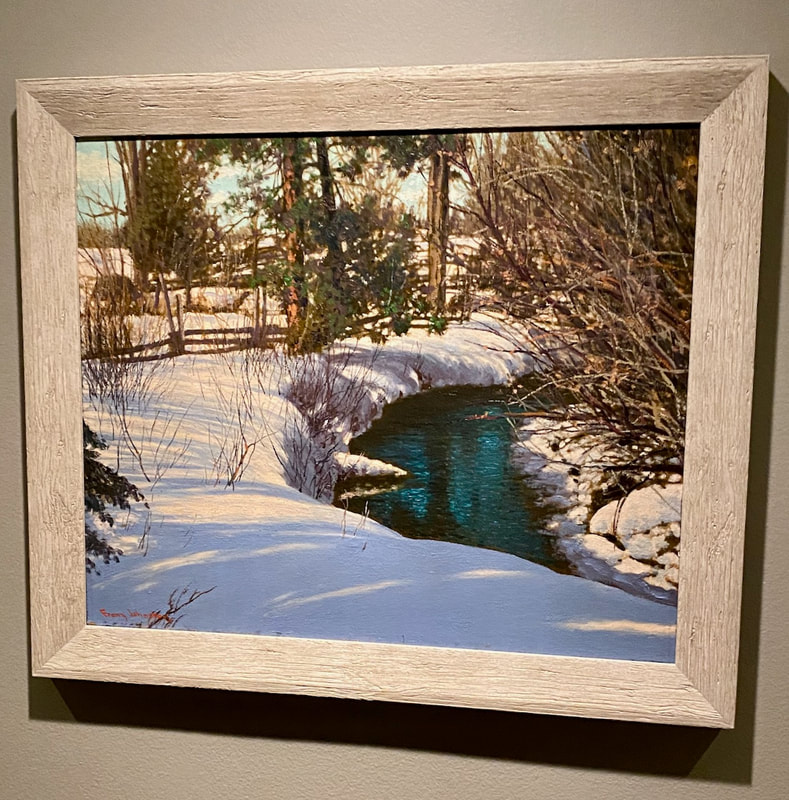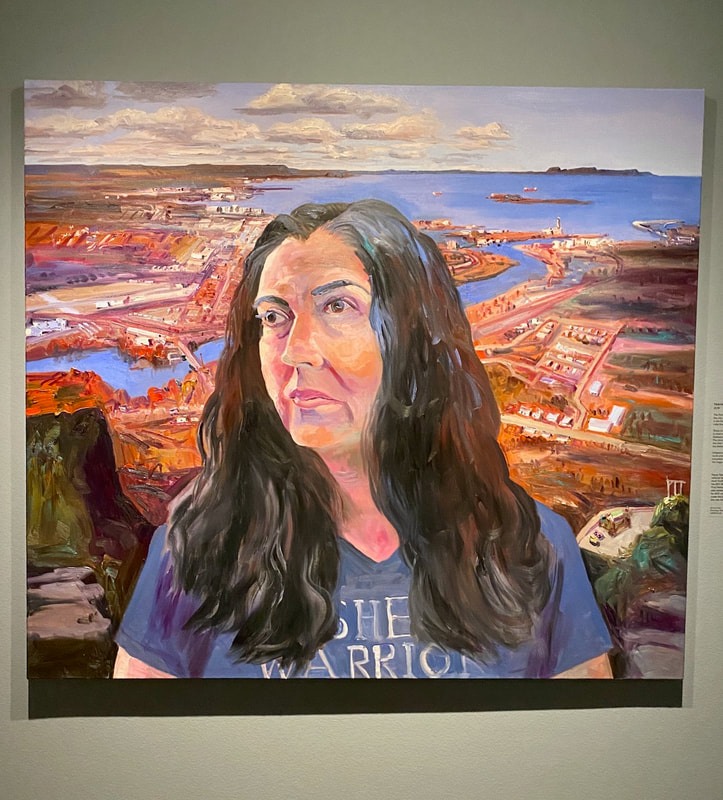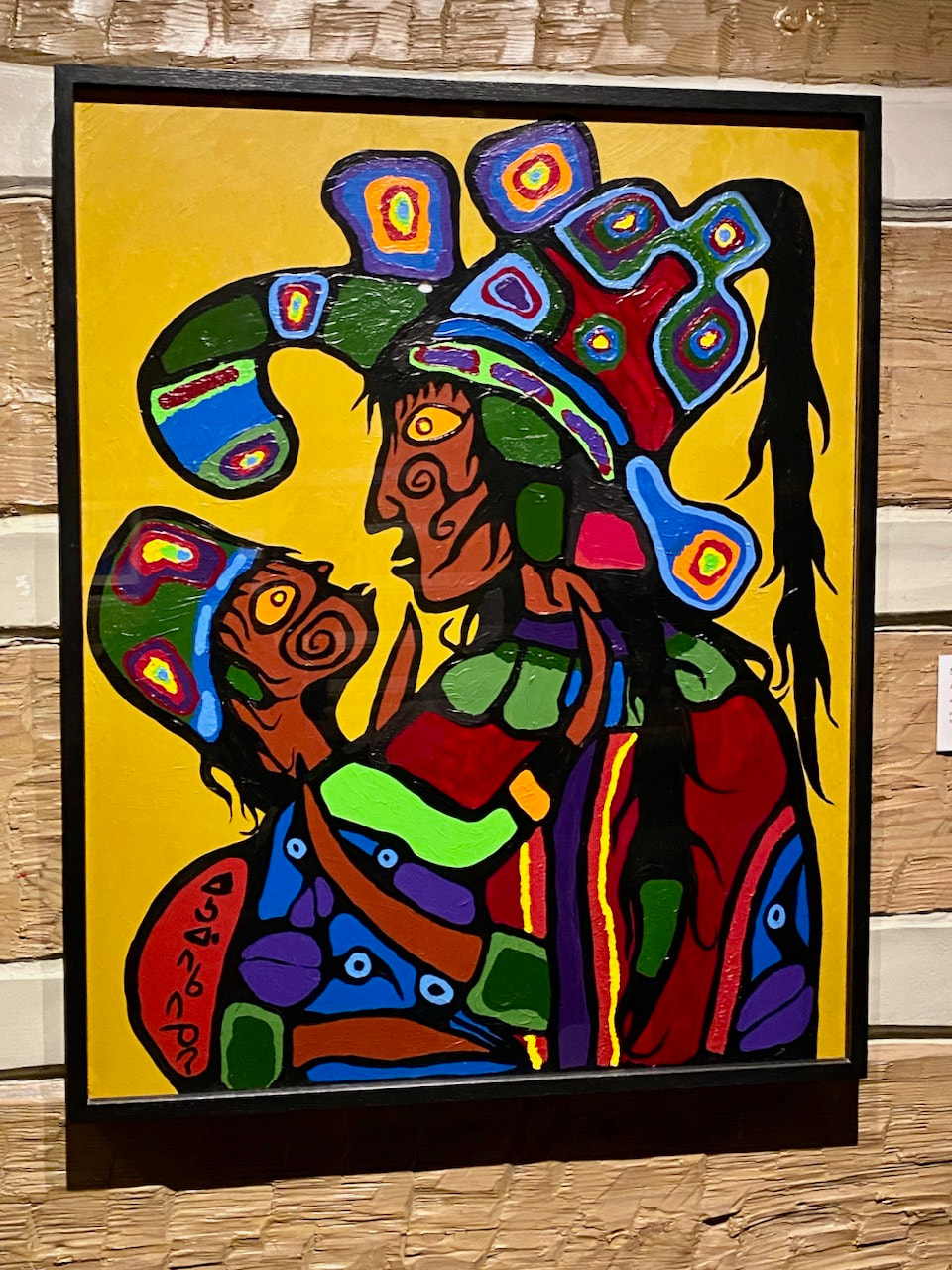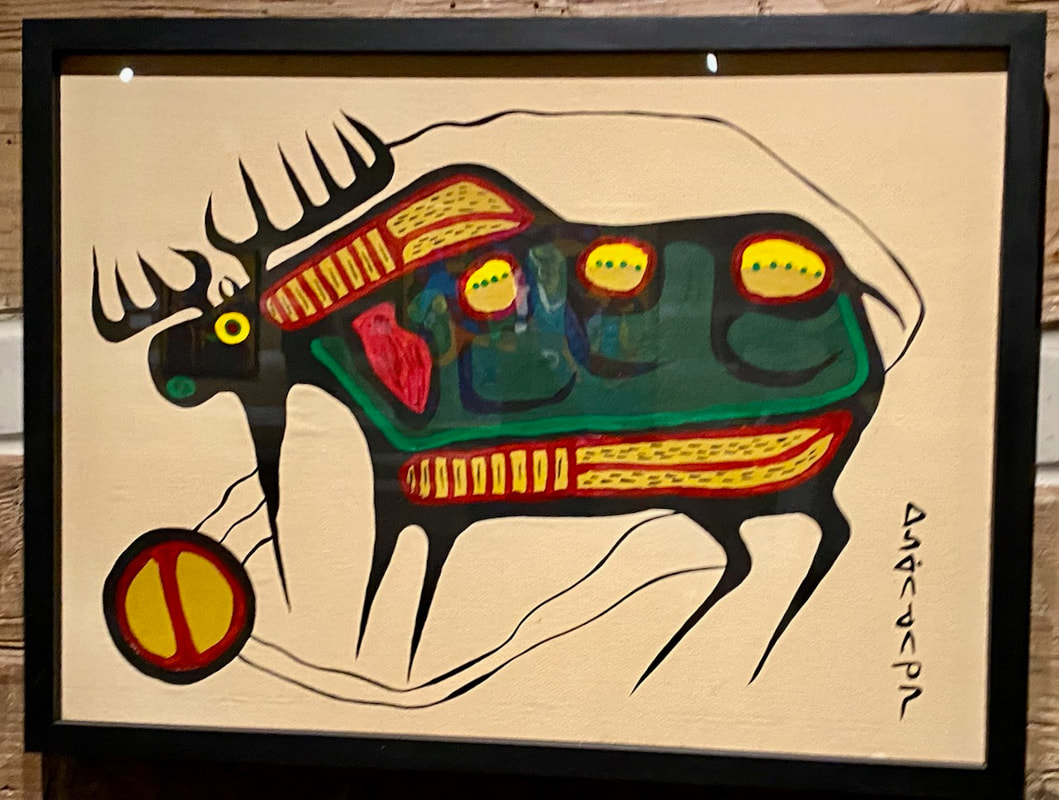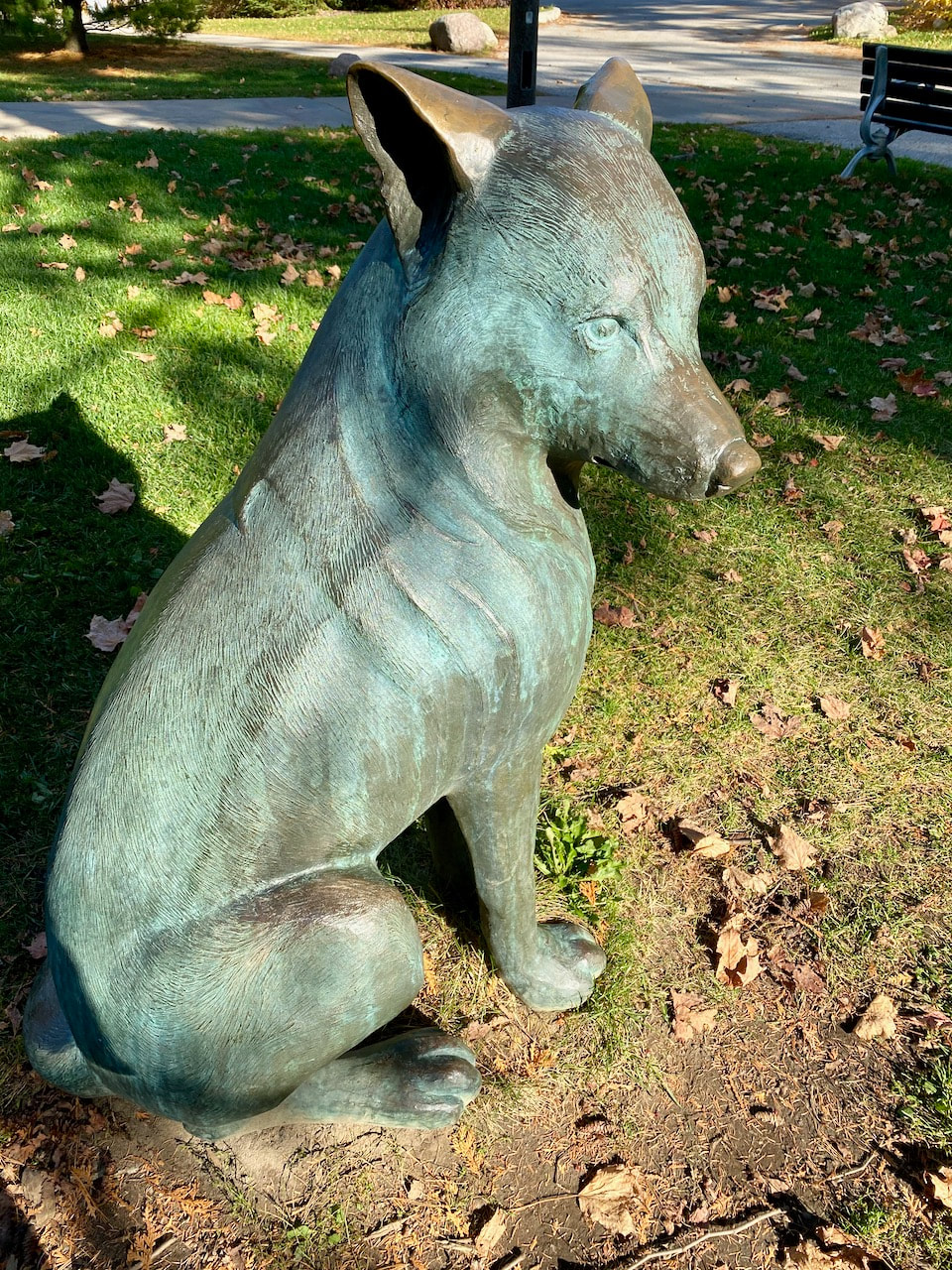A Fall Visit to the McMichael Museum
Etched in my memory and will stay there for some time is a rustic museum nestled in a canopy of maples and evergreens. The bright neon colors superimposed the dark greens. What a sight! But the real treasure is inside - its collection of Canadian art.
Curious to see how Fall unfolds in the McMichael Museum, we drove there one Saturday morning. We bought our tickets online and we also reserved spots for lunch at the Museum's restaurant. It was a genius stroke because there happened to be a wedding in the Museum venue which we had a full view of from our window seat in the restaurant. We enjoyed the added entertainment.
Curious to see how Fall unfolds in the McMichael Museum, we drove there one Saturday morning. We bought our tickets online and we also reserved spots for lunch at the Museum's restaurant. It was a genius stroke because there happened to be a wedding in the Museum venue which we had a full view of from our window seat in the restaurant. We enjoyed the added entertainment.
To my surprise, many cars were already parked. We were not as early as we planned for lunch. My friend had visited the Museum previously, but for me, it was the first time. When we drove to our cottage, we would always see the sign to the Museum but nothing would make family members stop for a second on such drives. They had previously seen the Museum, and they could hardly wait to be at the cottage.
The place immediately captivated me. The architecture, the design, and the acres of land surrounding it were a welcome site especially after the Covid lockdown. I could hardly wait to go in.
The place immediately captivated me. The architecture, the design, and the acres of land surrounding it were a welcome site especially after the Covid lockdown. I could hardly wait to go in.
History of the McMichael Museum
I had not read much about the Museum before the visit, as I wanted to be surprised. So, I could hardly contain my excitement. But before going to the collection, a bit of history on this Museum.
This Museum started with the vision or, perhaps, the obsession of Robert and Signe McMichael. They visualized a publicly owned gallery, which will be a Canadian sanctuary to be enjoyed by all. So, in 1952, the couple bought 10 acres of land in Kleinburg, Ontario, and started actively collecting works of Tom Thompson and the Group of 7, some of the most celebrated Canadian artists.
I had not read much about the Museum before the visit, as I wanted to be surprised. So, I could hardly contain my excitement. But before going to the collection, a bit of history on this Museum.
This Museum started with the vision or, perhaps, the obsession of Robert and Signe McMichael. They visualized a publicly owned gallery, which will be a Canadian sanctuary to be enjoyed by all. So, in 1952, the couple bought 10 acres of land in Kleinburg, Ontario, and started actively collecting works of Tom Thompson and the Group of 7, some of the most celebrated Canadian artists.
Artists in the Museum
Tom Thompson often departed for his foray at the Algonquin Park from Canoe Lake, where they found his dead body. Though not a part of the Group of 7, he was always associated with the Group. Below is a painting of one of the Group of 7, Franklin Carmichael. This particular painting is in the McMichael Museum.
The McMichaels
The McMichael's enthusiasm inspired other donors and artists to add to their growing collection, which they displayed in the house they built on the property. Designed by Architect Leo Venchiarutti, this house became the repository of their original collections.
In 1965, the McMichaels found themselves with a collection that sparked public interest in Canada's artists and so offered their land, home, and collections to the Province of Ontario, which officially opened this Museum bearing their name on July 8, 1966. The artist, A.Y. Jackson, lived in the McMichael's home in the last years of his life, a start to the many artists on residence in the Museum.
This was indeed a remarkable story of how a couple's love for art transformed their home and collection into a fantastic legacy.
The McMichael's enthusiasm inspired other donors and artists to add to their growing collection, which they displayed in the house they built on the property. Designed by Architect Leo Venchiarutti, this house became the repository of their original collections.
In 1965, the McMichaels found themselves with a collection that sparked public interest in Canada's artists and so offered their land, home, and collections to the Province of Ontario, which officially opened this Museum bearing their name on July 8, 1966. The artist, A.Y. Jackson, lived in the McMichael's home in the last years of his life, a start to the many artists on residence in the Museum.
This was indeed a remarkable story of how a couple's love for art transformed their home and collection into a fantastic legacy.
The Museum Collection
A total of 6,500 artworks comprise the Museum's permanent collection. This include works of those who contributed to the development of art in Canada:
A total of 6,500 artworks comprise the Museum's permanent collection. This include works of those who contributed to the development of art in Canada:
- Tom Thompson
- The Group of Seven, including Franklin Carmichael, Lawren Harris, A. Y. Jackson, Frank Johnston, Arthur Lismer, J.E.H. Macdonald, and Frederick Varley. Later added to this original seven were A.J. Casson, Edwin Holgate, and Lemoine Fitzgerald.
- First Nations, Metis, and Inuit
- Works on paper from the Inuit community of Cape Dorset (Kinngait), a resource of more than 100,000 artworks.
- Contemporary artists who have contributed to Canadian art development
Exhibitions and Other Activities
When we visited this Fall, there was a fascinating exhibition of the works of John Hartman, Many Lives Mark This Place. Superimposed on iconic Canadian landscapes were portraits of famous writers who found a physical, emotional, and philosophical inspiration in each of these places. As seen from the artist's eyes and the writers, these places stood out in different ways. I wish to visit these places and experience these authors' deeper meaning and appreciate Canadian literature's richness.
Above is a painting of the Toronto Star award-winning investigative reporter, Tanya Talaga. Hartman showed in the middle distance below the river the Fort William First Nations Reserve, of which Tanya's grandmother is a band member.
When we visited this Fall, there was a fascinating exhibition of the works of John Hartman, Many Lives Mark This Place. Superimposed on iconic Canadian landscapes were portraits of famous writers who found a physical, emotional, and philosophical inspiration in each of these places. As seen from the artist's eyes and the writers, these places stood out in different ways. I wish to visit these places and experience these authors' deeper meaning and appreciate Canadian literature's richness.
Above is a painting of the Toronto Star award-winning investigative reporter, Tanya Talaga. Hartman showed in the middle distance below the river the Fort William First Nations Reserve, of which Tanya's grandmother is a band member.
Norval Morriseau
I was also surprised to see many works of Norval Morriseau. I found out that in 1979, he was a resident in the Museum. Morriseau is a first nation artist I admire. Raised by his grandfather, a well-respected shaman, and a Catholic in the Sandpoint Reserve of Northwestern Ontario, his works expressed this unique shamanic spirituality peppered by Catholicism.
Above are two of Morriseau's works displayed at the Museum.
I was also surprised to see many works of Norval Morriseau. I found out that in 1979, he was a resident in the Museum. Morriseau is a first nation artist I admire. Raised by his grandfather, a well-respected shaman, and a Catholic in the Sandpoint Reserve of Northwestern Ontario, his works expressed this unique shamanic spirituality peppered by Catholicism.
Above are two of Morriseau's works displayed at the Museum.
Aside from the exhibitions, there are:
- walks of the acres of woods surrounding the Museum,
- art and nature meditation
- in-person and virtual art workshops
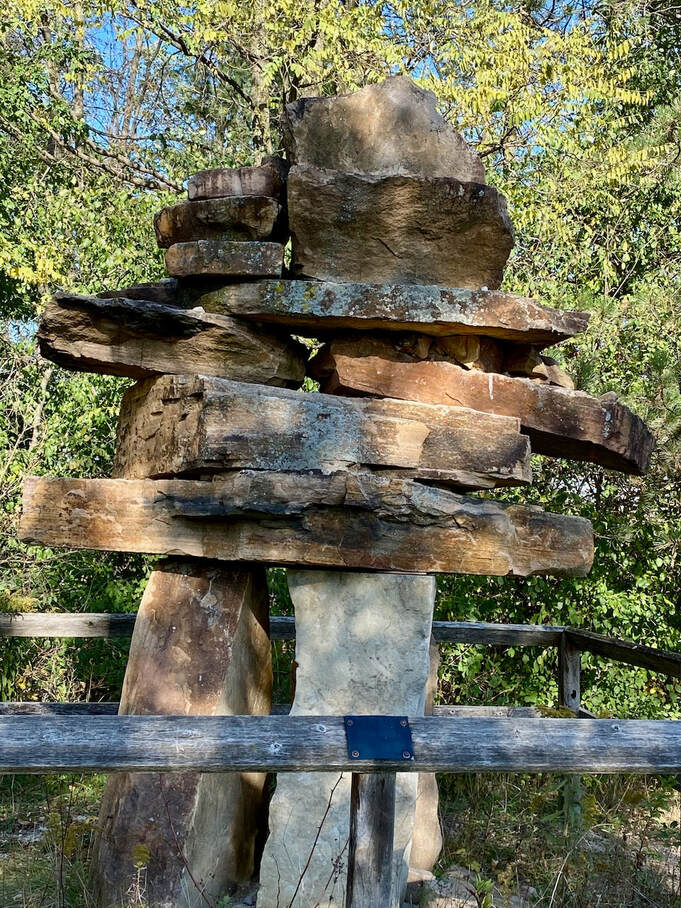 The Inukshuk at the McMichael Museum. Source: aesta1
The Inukshuk at the McMichael Museum. Source: aesta1
Take note as well of the various sculptures strategically displayed on the grounds of the Museum. As you walk towards the entrance, there are sculptures of three foxes. They are an important reminder that this place was once a wilderness.
But something you should not miss is the Inukshuk, pieces of rocks formed together into a human structure. The Inuits used this to herd the caribou or mark a site. David Ruben Piqtoukun made this particular Inukshuk celebrating the first Native Business Summit in June 1986.
But something you should not miss is the Inukshuk, pieces of rocks formed together into a human structure. The Inuits used this to herd the caribou or mark a site. David Ruben Piqtoukun made this particular Inukshuk celebrating the first Native Business Summit in June 1986.
Below are some of the other sculptures in the Museum grounds.
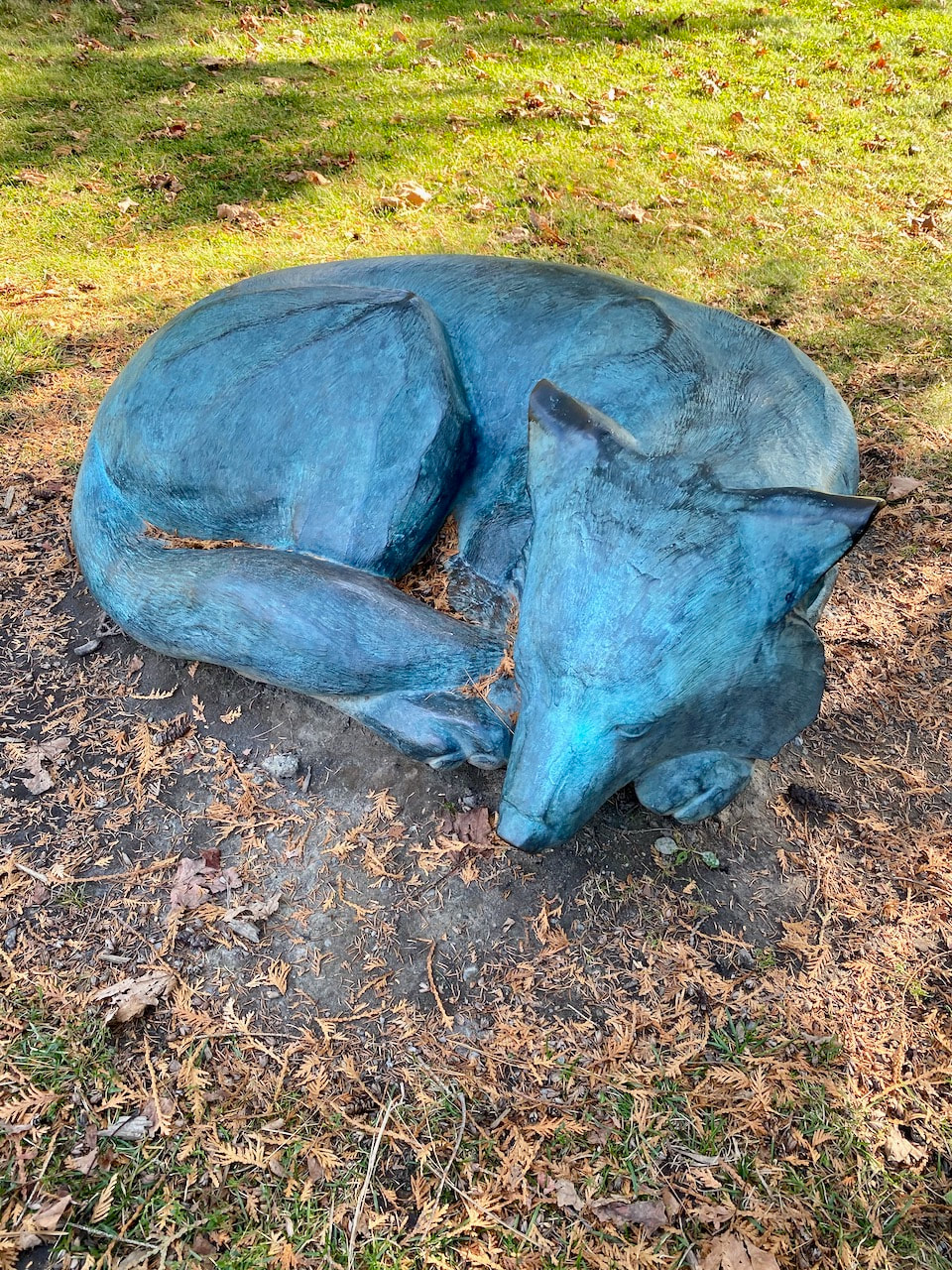 Dog Lying Down in the Grounds of the McMichael Museum. Source: aesta1
Dog Lying Down in the Grounds of the McMichael Museum. Source: aesta1
The McMichael's Museum is in Kleinburg, Ontario, Canada, just a short drive from Toronto.
For more information, visit the Museum's website.
For more information, visit the Museum's website.
Check out the sites below for more on northern, Ontario, Canada
